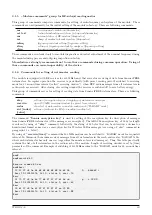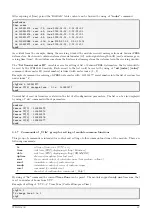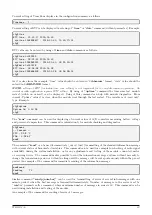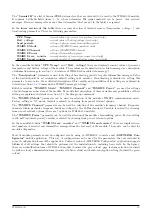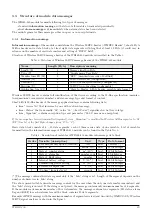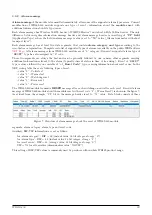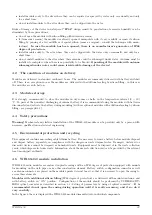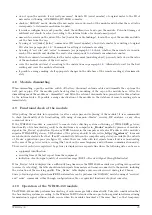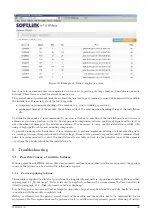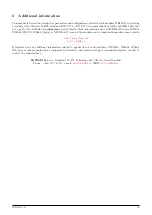
•
perform an elementary module diagnostics and alternatively go through the module configuration (setting of
parameters) with using of configuration cable as described in chapter
”
Module configuration”. In case the
module has been fully pre-configured in the preparatory phase of installation, at least check in ”RADAR”
mode whether all watermeters, that should be read by the module, are in the reach of its 430 MHz receiver;
•
tighten the nut on the antenna cable bushing to seal it;
•
insert the base back into the cap and fix with screws.
For the mounting in a humid environment it is
recommended to check rubber sealing before screwing the box back together;
•
if the internal rules or the mounting process needs the antifraud seal to be installed (as the protection from
the unwanted influencing), stick the antifraud seal across the joint between the two parts of the box.
(*) ATTENTION!
If the module is sealed by additional silicon filling with IP68 degree of protection do not open its
casing during the installation! Module configuration could be performed by USB-IRDA/BT-IRDA optical converter
.
If the module is rated in IP65 or IP68 degree of protection, this declaration is valid only under condition of the
proper mounting and sealing. When assembling the modules with IP68 degree of protection that will be placed in the
humid environment, it is necessary to follow these rules:
- cable bushing must be properly sealed;
- the joint of both parts of the box must be properly sealed by original rubber sealing).
After the mounting, write down the counter values of all consumption meters connected to the module into the
mounting sheet and alternatively once again check out the module‘s functionality and the correctness of output
values (which must correspond to consumption meter mechanical counters). Test the module functionality by
”
end-to-end” method, that means by checking of the readings directly in the central system of remote reading.
When locating installation site, selecting antenna type and antenna position it is necessary to take into account
conditions for radio signal propagation in the area of installation as well as protection of the device against possible
mechanical damage. The radio-signal conditions can be estimated empirically on the base of previous experience,
or examined by measuring of the signal strength by the reference transmitter/receiver.
4.7
Module and meter replacement
When there is necessary to replace the module due to the module failure or due to battery discharging follow this
procedure:
•
check the antifraud seal before dismantling – the antifraud seal damage must be solved according to the
internal rules of the customer/project;
•
unscrew two screws on the sides of the module base (beside the cable bushings), loosen the cap of the module
and slide out the base from the cap;
•
by switching of micro-switch (
”
jumper”) placed on the PCB into the
”
OFF” position (or replacing of shortening
connector from shortening pins) disconnect the module from the battery power supply;
•
if an external antenna used, disconnect the cable of the external antenna from antenna connector;
•
loosen the fixing screws (or clamping tape) that hold the module on the wall, pipe or other pad and dismantle
the cap;
•
put both parts of the module back together by screwing the cap together with base (*). Mark the module
visibly as
”
defective”, alternatively you can fill in the form (mounting report) about the module replacement;
•
install a new module in the same way as described in paragraph
above. Pay attention to the correct setting
of basic parameters, namely broadcasting period and communication with watermeters;
•
write down the serial number and seal number of the new module, alternatively also actual statuses of counters
of connected meters;
•
if possible, arrange making of all appropriate changes in the database of the remote reading system immedi-
ately.
(*) CAUTION!
The type label with the module serial number is always on the cap of the module so the base and
the cap of the module must always be one whole unchangeable unit. Always pay attention to the completing of the
correct cap with the correct base of the module, that is the reason why it is always necessary to replace the whole
module – the base and the cap together. The correct module completion can be checked out according to the auxiliary
label with the serial number glued on the PCB.
When there is necessary to replace a consumption meter read by the module due to the meter failure, expired
metrology period or for any other reason, follow this procedure:
WB169-430
24

